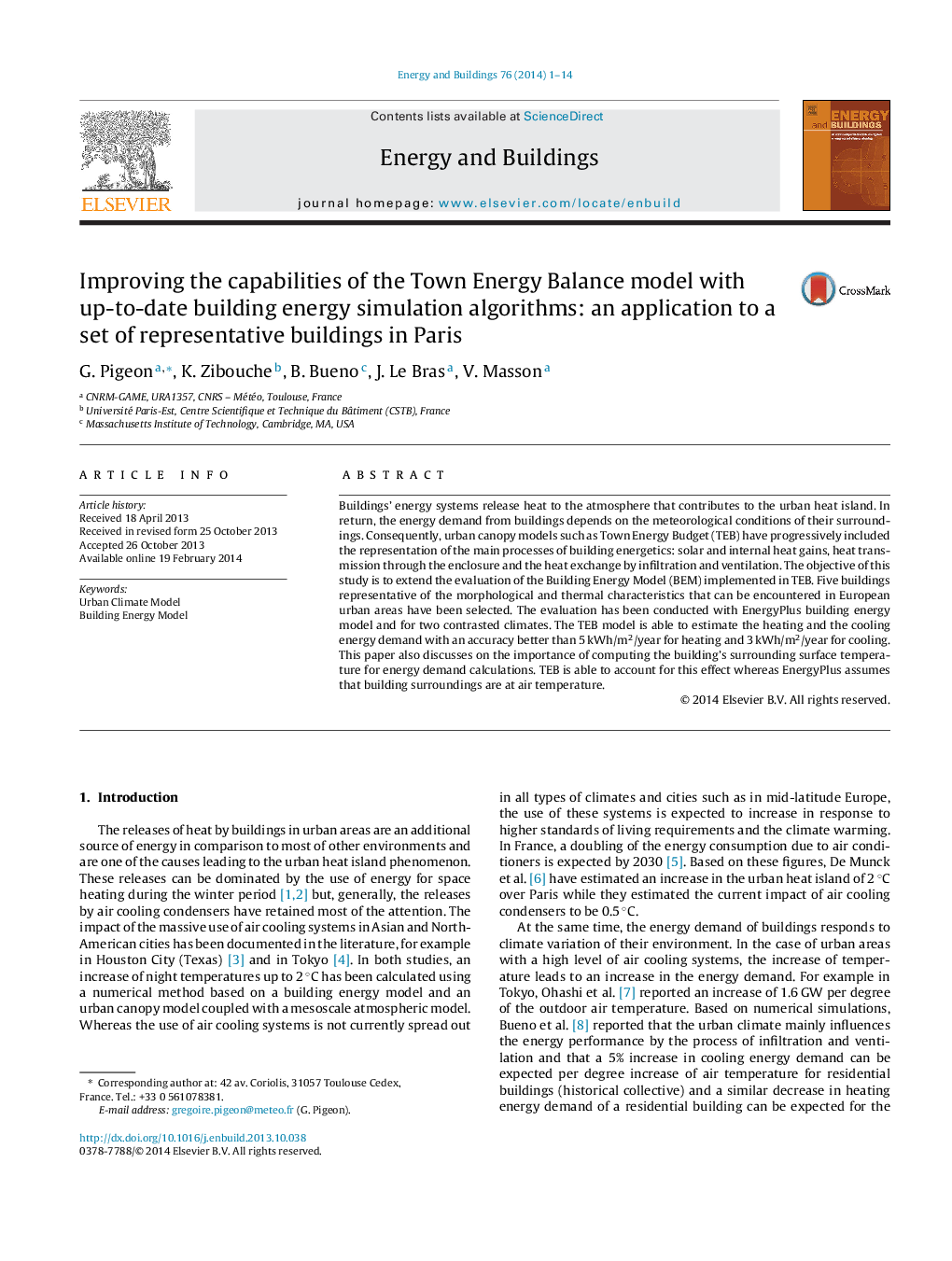| Article ID | Journal | Published Year | Pages | File Type |
|---|---|---|---|---|
| 6733483 | Energy and Buildings | 2014 | 14 Pages |
Abstract
Buildings' energy systems release heat to the atmosphere that contributes to the urban heat island. In return, the energy demand from buildings depends on the meteorological conditions of their surroundings. Consequently, urban canopy models such as Town Energy Budget (TEB) have progressively included the representation of the main processes of building energetics: solar and internal heat gains, heat transmission through the enclosure and the heat exchange by infiltration and ventilation. The objective of this study is to extend the evaluation of the Building Energy Model (BEM) implemented in TEB. Five buildings representative of the morphological and thermal characteristics that can be encountered in European urban areas have been selected. The evaluation has been conducted with EnergyPlus building energy model and for two contrasted climates. The TEB model is able to estimate the heating and the cooling energy demand with an accuracy better than 5Â kWh/m2/year for heating and 3Â kWh/m2/year for cooling. This paper also discusses on the importance of computing the building's surrounding surface temperature for energy demand calculations. TEB is able to account for this effect whereas EnergyPlus assumes that building surroundings are at air temperature.
Keywords
Related Topics
Physical Sciences and Engineering
Energy
Renewable Energy, Sustainability and the Environment
Authors
G. Pigeon, K. Zibouche, B. Bueno, J. Le Bras, V. Masson,
